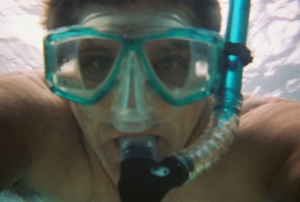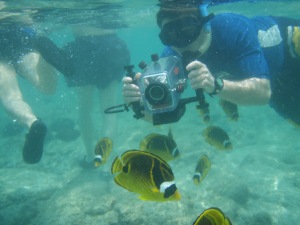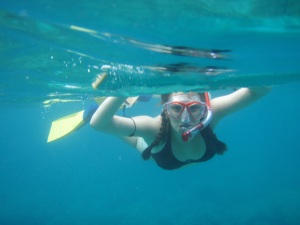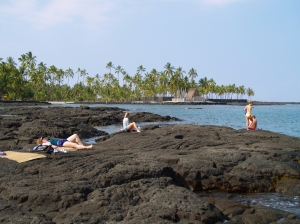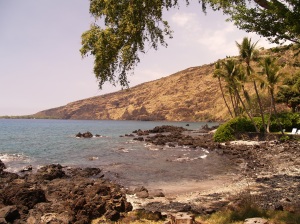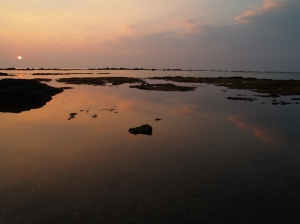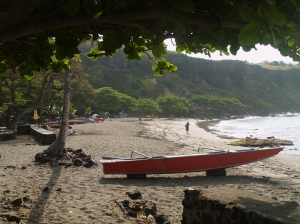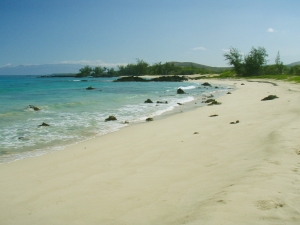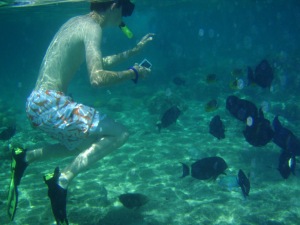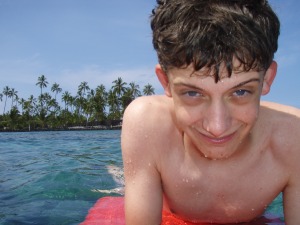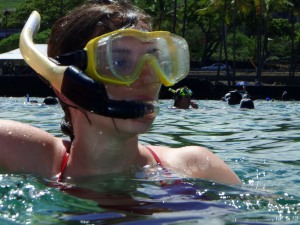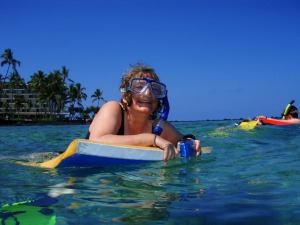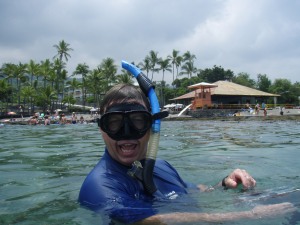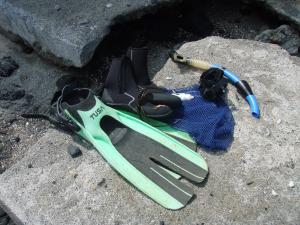by Donnie MacGowan
Whether you visit the Big Island for a few days, a couple weeks or a few months, you want to make the most of your time in Paradise. With such a wide variety of natural and commercial attractions, it is natural for the visitor to get a little overwhelmed in the “Option Overload” and not be able to make a balanced and informed decision on what they want to do and how best to spend their time.
Even choosing activities you want to participate in...do you want to snorkel, hike, go on a whale watching tour? We always recommend people do three basic things when they come to Hawaii: get in the air, go to a luau and get in the water. By getting in the air you get a glimpse of how magnificent our island home is, it is the best way to watch the volcano erupt and it allows you to sort of "scout" the island to see where you might want to spend more time. By going to a luau you get an introduction to Hawaiian culture and cuisine--you get a taste of what it means to live in Hawaii. And by getting in the water you experience the magic wonder of our reefs and colorful fish, the calm and renewal from floating in our warm, turquoise waters and the thrill of exploring something new, different and a little wild. We highly recommend you go snorkeling on your visit...but where do you go? Do you want a snorkel beach for beginners, or a place that's challenging to experience? Are you going simply to get in the water and see the fish or do you want a beach that's also alive with fun people? Are you looking for an experience that away from crowds, secluded and empty or one that's exciting, but perhaps a little more tame? Do you want to snorkel near your resort or one that's at the end of a day of delicious wandering?
Ranked in order, with the best on top, are our picks of the best snorkeling spots on the Island of Hawaii. We've tried to strike a balance in ranking these places since each is a gem in its own right, we've had to leave off many that are equally fine for their own reasons and of course, recommending some means that their popularity will increase and hence, they will become more crowded. This list at least provides an excellent starting point for deciding where you want to spend you beach time. When you arrive we ask that you treat these special places, and the people who live near them, with care, respect and aloha.
Two-Step Beach at Hounaunau Bay: Class Triple-A waters, stuffed with a wide variety of brilliant tropical fish, set in a calm and protected bay, and frequently visited by dolphins, this snorkeling area near the grounds of one of the most important Hawai'ian archeological sites is perhaps the most popular and one of the three top places to snorkel on the island. It earns the top spot because of it's easy accessibility.
Kealakekua Bay: Whether you hike or boat to Captain Cook Monument, or enter the bay to snorkel at the end of the road in Napo'opo'o, there is no place on earth that has better snorkeling or more fish than Kealakekua Bay. Frequented by both dolphin and whale, protected, Class Triple A waters and a setting unmatched in beauty anywhere, this the premiere place for kayak-to-snorkel adventures on the island. Arguably, this bay and the Hawaiian settlements that surround it, experienced the most momentous and important historical events yet to unfold in the human history of the state of Hawaii.
Kahalu'u Beach: Referred to by many visitors as “Snorkel Beach” Kahalu'u is centrally located along Ali'i Drive in Kailua Kona. The welcoming waters are protected by a seawall and are amazingly warm, shallow and crystalline turquoise. The safety and ease of conditions here, many resident turtles and abundant colorful fish and the great facilities make this a perfect place to learn to snorkel, or for the tried and true veteran to “get wet and meet the fish”.
Ho'okena Beach: Ho'okena Beach is a fabulously beautiful beach park well off the beaten path, plunked down in the honest-to-gosh old Hawaiian village of Ho'okena. This beach has an amazing array of underwater topography populated by perhaps the greatest variety of reef fish n the island; recently rebuilt, this park has fine facilities including a refreshment stand as well as snorkel and kayak rentals. Ho'okena is a true snorkeler's mecca.
Makalawena Beach: Perhaps the loveliest wilderness beach in Polynesia, Makalawena is the perfect sand crescent, beach backed by palms and iron wood trees with morning-glory-draped sand dunes. A easy mile hike in from Kekaha Kai State Park keeps this beach uncrowded. Snorkeling here is better than perfect. Simply drive to Kekaha Kai State Park and walk the well-marked trail north to the beach.
Before we leave the topic of Best Snorkeling Beaches on the Island of Hawaii, we'd like to impress upon you the need to be proactive in keeping these places special and how to make your experience the best it can be. The open ocean is not your resort pool and deserves immense respect from you--the ocean is the strongest natural force on earth. Never snorkel alone, never turn you back on the ocean. Drink lots and lots of water; no, drink even more. Never snorkel after having consumed alcohol. Ask the lifeguard about conditions, chat with people coming out of the water about what they liked best and what conditions are like.
- .
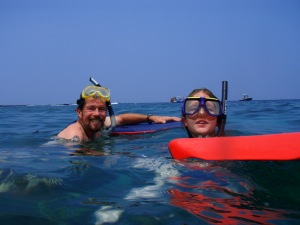
- Gary Burton and his daughter snorkel at Hounaunau Bay: Photo by Donald MacGowan
Please wear a hat and t-shirt to protect yourself from sunburn while in the water--never apply sunscreen just before entering the water,wait until you are done snorkeling and have rinsed off--sun-cream kills the coral and poisons the water. When in the water, do not stand directly upon the coral to rest, do not touch the coral or the fish; never feed the fish or other marine animals. Do not touch, approach, chase or harass the sea turtles, dolphins or whales--it's not only dangerous, it's illegal and will earn you a hefty fine. Always obey posted warnings and the lifeguard; do not swim in windy conditions (dangerous) or murky water (sharks); be aware of currents and rip tides. Jellies ride in with inshore breezes.
Get out before you feel tired, get out before you feel sunburned, get out before you get thirsty; get out before the wind comes up or the sun goes down; get out before you feel ready--you are more tired than you think. Rinse yourself and your gear off after snorkeling and remember to apply sun-cream liberally and often--you are getting more sun than you think. Always pack out everything you brought with you and dispose of your litter (and that stuff the ignorant slob over there left, as well) appropriately. These beaches get an enormous amount of pressure, try to leave Paradise a little nicer than you found it.
And for heaven's sake, plunk-down ten bucks for a disposable underwater camera; in fact, buy two. I promise you will kick yourself from now until you return to Hawaii if you don't! You will want to show the folks back home your snorkel adventures, which seem to always be the most memorable of any trip to Paradise. Trust me, any money you spend on disposable underwater cameras will be the best return on investment of any part of your Hawaii vacation.
A video introducing the subject of snorkeling, technique, gear and safety can be found here.
For more information of traveling to Hawaii in general or exploring the Big Island in particular, please also visit www.tourguidehawaii.com and www.lovingthebigisland.wordpress.com. Information about the author can be found here.
All media copyright 2009 by Donald B. MacGowan.
